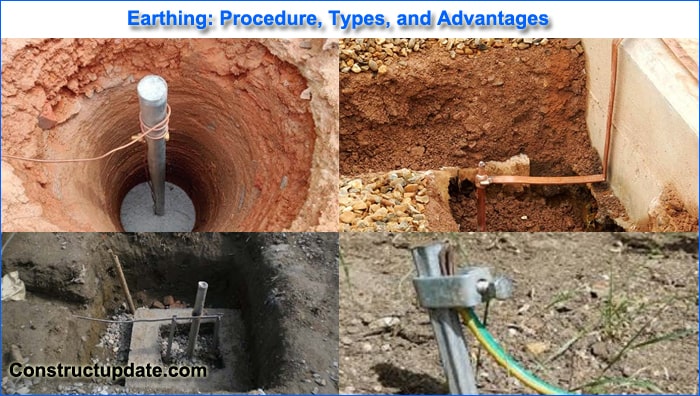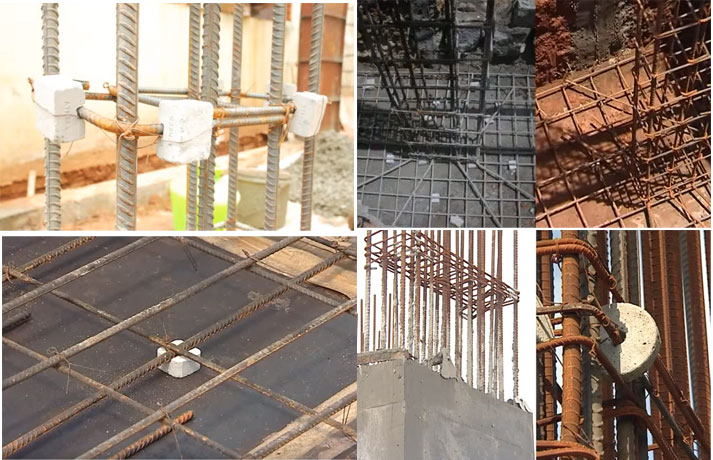Earthing Types | Earthing Procedure and Advantages
What is Earthing?
The method of earthing involves discharging and sending the charge through a wire with a very low resistance into the earth. It is present around us because it is necessary for using power for home reasons. We often employ a single-phase ac supply for home uses, and an earthing completes the circuit by transferring charge. Copper and aluminium wire are used for earthing.
However, copper wire is taken into consideration for better discharging because it is a better electrical conductor than aluminium and offers a less resistive channel for current than aluminium. The devices are shielded from electrical harm by earthing. When using appliances, we occasionally experience moderate shocks; earthing should be used in buildings to prevent these shocks. Another method of preventing shocks and preserving the health of the appliances is grounding.

Why Earthing is Must Important for a House?
By transferring the charge to the earth, earthing protects appliances from electrical harm. Thus, earthing is necessary to prevent harm. When a circuit experiences high current flow, it discharges the excess current to the earth, where it is not helpful and keeps the circuit from igniting and harming the appliances. Additionally, it completes the circuit so that the appliances can function normally. Additionally, earthing must be done in a certain way or it may result in strange behaviours.
There is a location in the building that has been specifically created for earthing. It is deeply buried, and copper wire and minerals are utilised for it. And if there is a problem with the figure, it safeguards the circuit to prevent harm or fire. Therefore, earthing is crucial when using any equipment, so it must be installed correctly. These thus are the justifications for why earthing is necessary for homes. Let’s now examine the sort of earth.
Types of Earthing
1. Pipe earthing
Using a steel pipe to connect to the electrical conductors of the earth is a typical practise known as pipe earthing. In pipe earthing, a 38 mm diameter by 2 m long galvanised steel pipe that is installed vertically in the ground serves as an earth electrode.
The size of the iron pipe that must be utilised depends on the soil’s moisture content and the current’s intensity. The maximum depth at which steel pipe can be laid will depend on how damp the earth is.
Pipe earthing is the best and most efficient technique of earthing, and it is also quite inexpensive.
2. Plate earthing
A copper or iron galvanised plate is buried inside the ground in this sort of earthing; the depth of the plate should not be less than 3 mm.
In plate earthing, the charge is transferred in such a way that the transferred charges first impact the plate before the plate splits them completely into the earth.
And this is how the charge transfer process operates.
3. Strip earthing
In this method of earthing, strip electrodes are buried in horizontal trenches at a minimum depth of 0.5 m and with a minimum cross-sectional area of 6.0 mm2. If the electrodes are constructed of steel or iron that has been galvanised, their cross-sectional area must be at least 25 mm by 1.6 mm.
A conductor with a minimum length of 15 m would be sufficient to produce adequate earth resistance when buried in the ground.
4. Rod Earthing
The lengths of the implanted electrodes minimise the earth’s resistance in this method of earthing, which involves manually or with a hammer inserting a copper rod with a galvanised steel pipe into the ground at the correct depth.
The rod used for this purpose is firmly diverting the short-circuit voltage to the ground by being buried in the soil at a specific depth.
This earthing method is relatively affordable and ideal for sandy locations.
Advantages of Earthing
There are many benefits to earthing; the following are only a few of them:-
- It stops overcurrent from flowing in the circuit, and in the event that it does, it transmits the extra current to the ground.
- It stops the circuit from catching fire or the appliances from becoming damaged. It keeps any service damages from happening should a circuit fault occur.
- It eliminates the possibility of setting on fire and killing the operator.
- This stops lightning. If an earthing rod is positioned vertically upward on the top of the building, lightning will strike it rather than the building in the event of lightning, and the high voltage will then travel inside the earth.
- It functions as a form of shield against circuit faults.




